

Discover more from The Cottage
“It’s no secret the middle has been a hard place to get to lately between red and blue, between servant and citizen, between freedom and our fear,” Bruce Springsteen says in a beautifully-produced and moving Jeep ad during the Super Bowl. “As for freedom, it’s not just the property of the fortunate few. It belongs to us all.” The commercial focuses on the geographical “middle” of America, the Kansas location of the center of the lower 48 states, a spot marked with a small white chapel. “We need the middle,” Springsteen says. “We just have to remember the very soil we stand on is common ground.”

“It’s a prayer,” says Olivier Francois, the global marketing officer for the Jeep’s parent corporation. “We wanted it to be the most spiritual commercial in the history of Super Bowls.”
In many ways, Jeep succeeded. The land, the empty roads, the snow, and the chapel ably serve as a stark, often bleak, visual meditation for Springsteen’s lament. Like many, I found it emotionally captivating and compelling. A reminder of something America has lost and the need to find our way back together in this winter of political discontent.
The commercial, however, falls short from the perspectives of both history and theology. Some accused the ad of Christian nationalism. Others criticized the idea of a “middle.” Beyond its obvious emotional appeal, aspects of the narrative are troubling.
First, there is no mention of the original inhabitants of the land — the Pawnee tribe. Second, the only person in the ad — Bruce Springsteen — seems a lonesome figure oddly disconnected from community even as he pleads for a “ReUnited” States of America. But third, and perhaps most important, the symbols of the commercial are singularly Christian, a damaging neglect of religious diversity. A white chapel with a steeple. Inside, under the words "Pray America," hangs a wooden flag in the shape of the United States mainland. A cross, with a heart, is nailed over Kansas.
Despite the beauty of the ad, and what is an important and well-intentioned message, the whole thing left me wondering: Is “unity” for white Christians only?
In the spirit I think Jeep wanted to convey (at least I hope what they wanted to convey), I fixed the ad for them.
There’s a chapel in Kansas, standing on the exact center of the lower forty-eight, on the ancestral lands of the Pawnee, Osage, and Omaha, the tribes who for centuries called the Great Plains home.
A short three hours drive away, very near the middle of America, in the city of Omaha, Americans from three ancient religions traditions — Christians, Jews, and Muslims — are together creating a sacred place, with beautiful worship spaces and a garden, to overcome the divisions that have separated them and imagine a future of true peace for all God’s people. They call it the Tri-Faith Commons. And they believe places like theirs offer an antidote to religious division and extremism of fear and hate, connecting interfaith neighbors in community, and fostering relationships.

Here, unity is not a distant dream. It is a practice, a commitment, a covenant. With real buildings, programs, and shared goals. And it isn’t a mushy, muddled “middle.” These Americans know that bridges can be built (literally) between religions, that differences can be overcome in love of neighbor. For them, the middle is not cold or bleak, but a circle of peace, a fertile farm, a place of orchards and crops, a neighborhood where all can pray according to their own faith without dismissing or denying others.
They know that the land is not theirs, but rather a place of remembrance and possibility, a community of song and story. They honor their unique identities and inheritances as they work together for the greater good. Each are a distinct people with history and traditions that matter; each a family and yet part of the larger human family. This is the most robust kind of unity, the healing of divisions and genuine welcome for all.
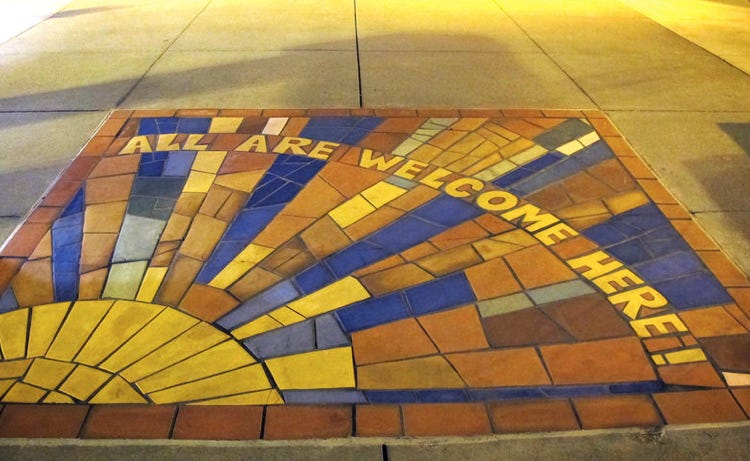
The ReUnited States of America is being built. Not just at Tri-Faith, but every day, in all sorts of places — on the plains and prairies, in the mountains and deserts, in towns and cities — Americans are making space for understanding, acceptance, and learning from their differences. It is home of white, black, and brown; for those of many faiths and none. We forget to drive there — to these locations of hope. Instead, we too often stick to destinations of our own discontent or places we consider safe.
The land is neither frozen nor lonely. This middle holds stories of past, present, and future that speak to our mistakes and failures, our tenacity and triumphs, and a more just and compassionate future. The open road calls. America is building a better “middle,” even in the middle. All we need to do is go and look.
INSPIRATION
some poems from Midwestern writers on land and hope
Kansas coos me into its wheat.
Done with direction, I follow the lightning,
God's arrows insisting even the desolate
can be a destination.
In the black and white of a winter dawn
a train zippers the wet land
to a sky clouded with intention.
It looks more like a photograph
than a photograph resembles the moment
it captures, its frame diverting, its filter
slanting truths. Say I make of this a photo—
what would the evidence show?
— Erin Adair-Hodges (from “Unmappable”)
While we wait
the woman earth sings with the tribes,
transforms herself
into all things.
— Diane Glancy (from “The Eight O Five”)
Why do you stand looking up at the skies?
(Acts 1:11)
It wasn’t just wind, chasing
thin gunmetal clouds
across the loud sky;
it wasn’t the feeling that one might ascend
on that excited air,
rising like a trumpet note.
And it wasn’t just my sister’s water breaking,
her crying out,
the downward draw of blood and bone….
It was all of that,
the mud and new grass
pushing up through melting snow,
the lilac in bud
by my front door, bent low
by last week’s ice storm.
Now the new mother, that leaky vessel,
begins to nurse her child,
beginning the long good-bye.
— Kathleen Norris (“Ascension”)
My next book, Freeing Jesus comes out on March 30 — and is available for preorder in hardback, ebook, and audio. Find out more about the book and pre-order HERE.
For booking events based on Freeing Jesus, please contact Jim Chaffee at Chaffee Management. We’re booking virtual events through spring 2021, and blended and in-real-life events for later 2021 and into 2022.
For podcast, media, and interview availability, please email Dan Rovzar at HarperCollins publicity: Dan.Rovzar@harpercollins.com.

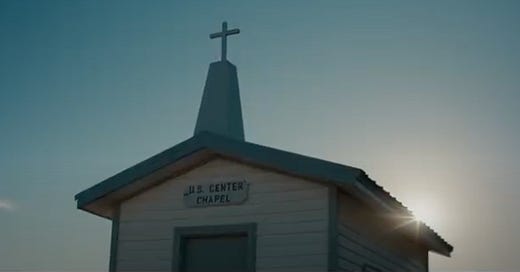


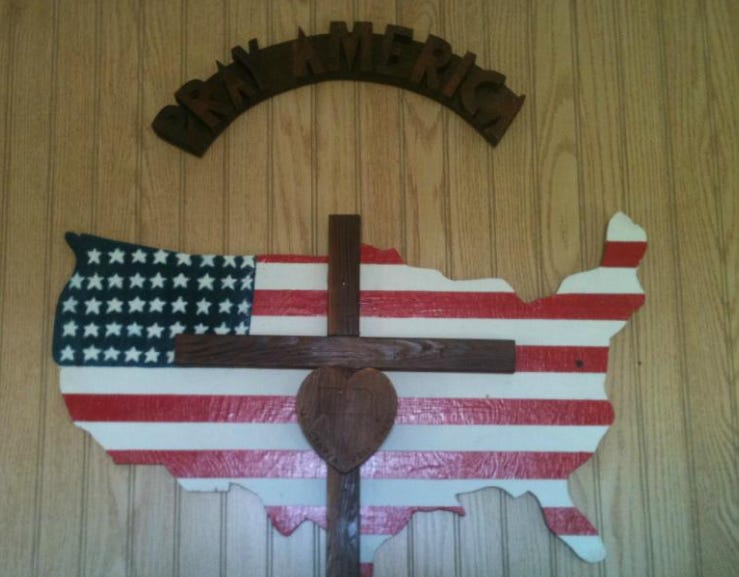

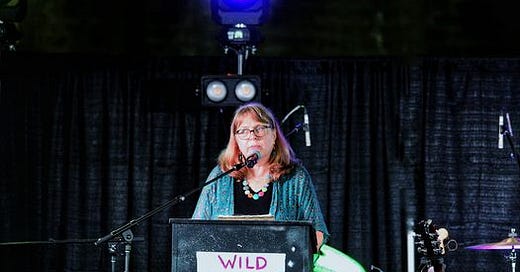

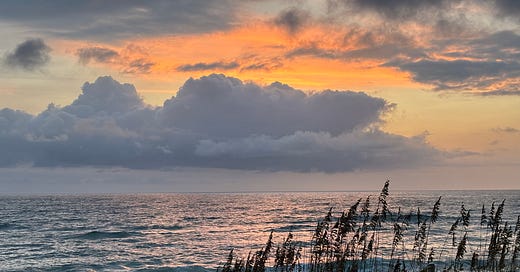

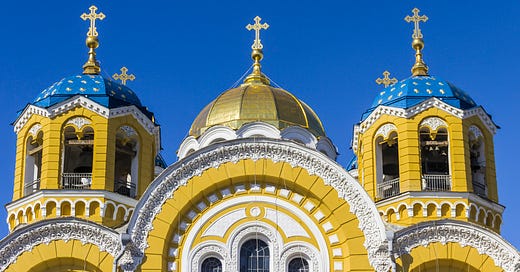

Bless you! this is marvelous and does just what is needed. So very grateful. The WaPo article today says, "...Springsteen is ultimately preaching reconciliation without reckoning — which after January’s Capitol siege is no longer an acceptable path toward progress." I agree. Thank you so much for highlighting what we could have heard about—those actual faith communities coming together! Terrific writing.
Thank you. Dr. Bass. You have indeed "fixed" the Jeep commercial so it can be about America the beautiful, strong mosaic that it is.